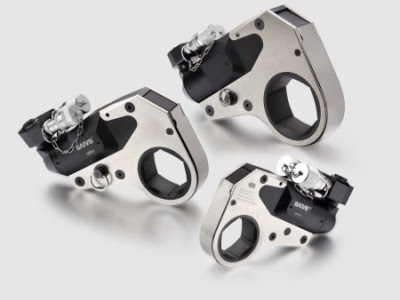Electrical hydraulic pumps are commonly used in the hydraulic drive systems and these can either be hydrodynamic or hydrostatic. The hydraulic pump is usually a mechanical power source that is used for converting mechanical power into some hydraulic energy. This is able to generate flow that has enough power to overcome the pressure that is caused by the load as the outlet of the pump. During the operation of the hydraulic pump, this results in a vacuum at the inlet of the pump and this force the liquid form reservoir to inlet line and pump and causes the liquid to get into the hydraulic system.
The hydrostatic pumps are the positive displacement pumps. While hydraulic torque wrench pumps are commonly used in the day to day operations, hydrostatic pumps are of different types and work within the Pascal’s law principle. This principle states that where there is pressure increase, at a certain point of an enclosed liquid that is in a rest equilibrium, it is usually transmitted in an equal manner to all the other points of a liquid, unless the gravity effect gets affected.
The hydrostatic pumps are the positive displacement pumps. While hydraulic torque wrench pumps are commonly used in the day to day operations, hydrostatic pumps are of different types and work within the Pascal’s law principle. This principle states that where there is pressure increase, at a certain point of an enclosed liquid that is in a rest equilibrium, it is usually transmitted in an equal manner to all the other points of a liquid, unless the gravity effect gets affected.
Gear pumps
Gear pumps that have fixed displacement are not only simple but they are also economical pumps. The swept displacement or volume of the gear pump of the hydraulic usually ranges between 1 and 200 milliliters while their volumetric efficiency is the lowest as compared to those of piston and vane pumps.
Rotary vane pumps
Rotary vane pumps usually have higher efficiencies as compared to the gear pumps. They are also used in mid pressures of between 180 bar in general. The modern units can get over 300 bar when in continuous operation. However, the vane pumps are not considered to be components of high pressure.
Screw pumps
Screw pumps are usually made of 2 Archimedes screws intermeshing and enclosing in one chamber. If you are searching for 3 stage hydraulic wrench pump, you should get in touch with Hydraulic Saivs.




